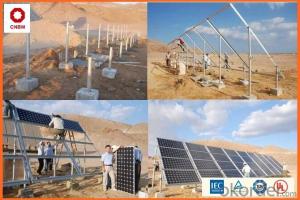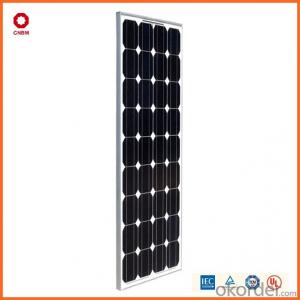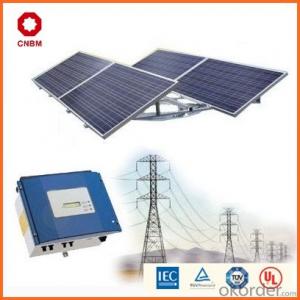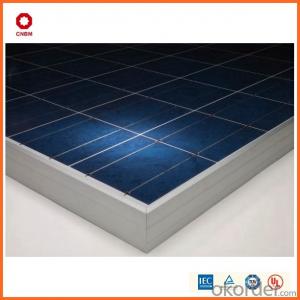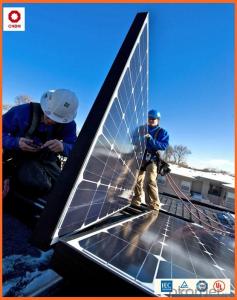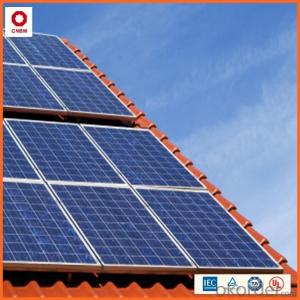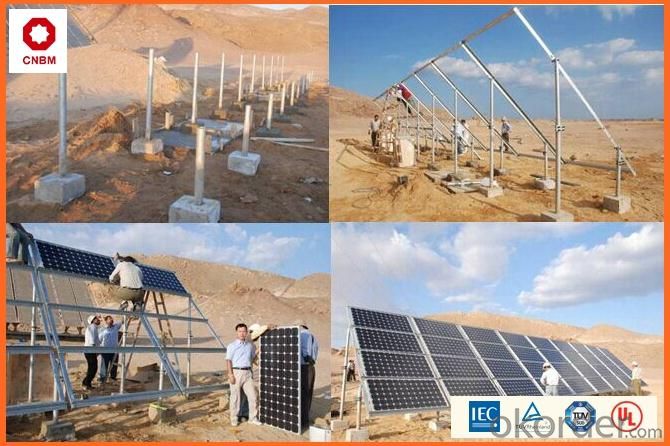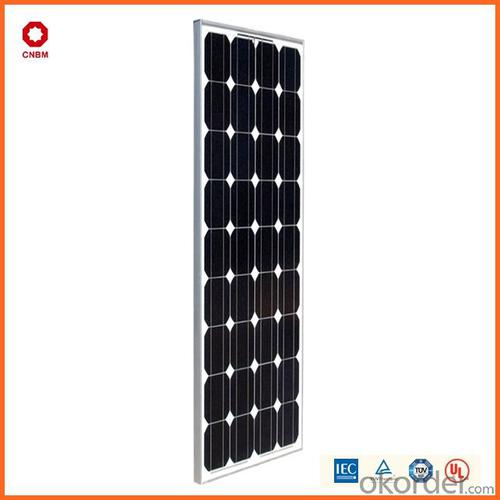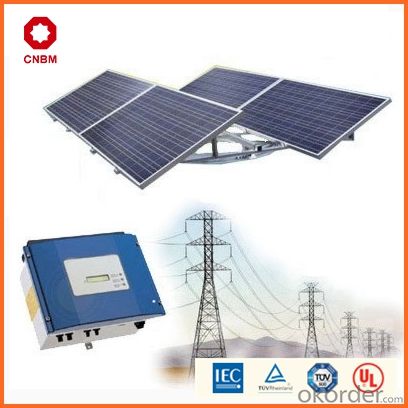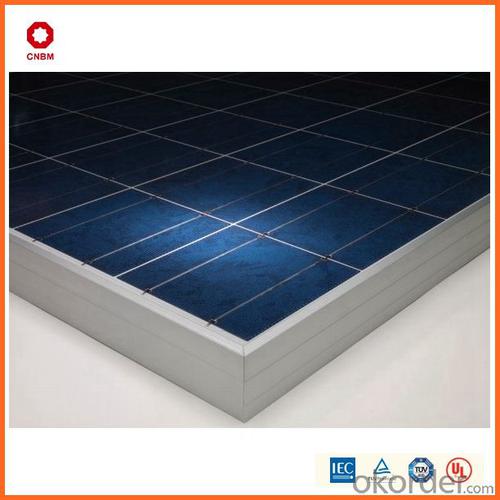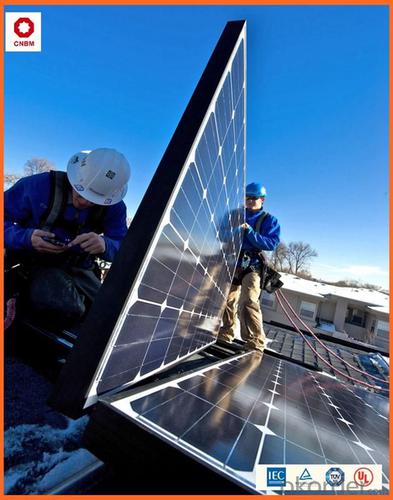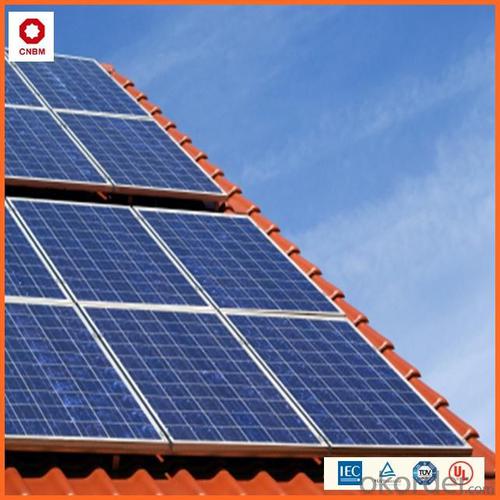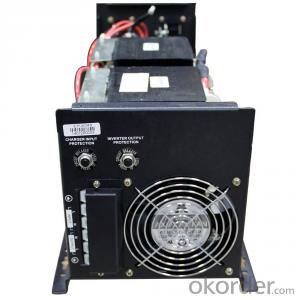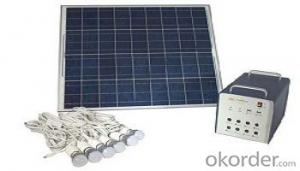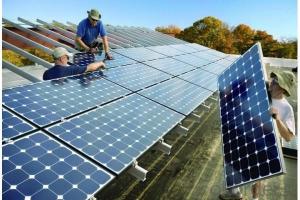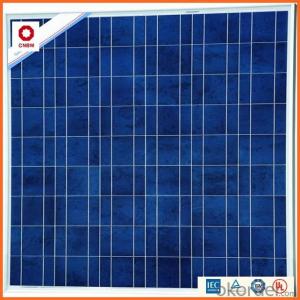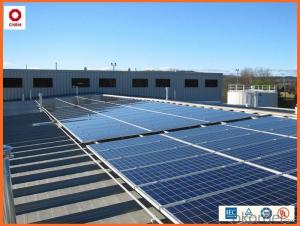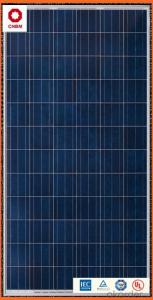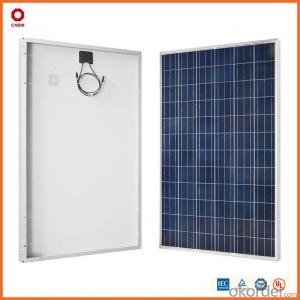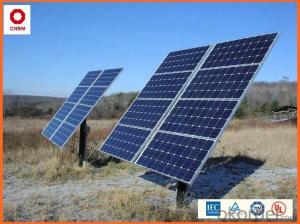Solar Energy Systems Llc 85w Small Solar Panels In Stock China Manufacturer
- Loading Port:
- China main port
- Payment Terms:
- TT OR LC
- Min Order Qty:
- 1 watt
- Supply Capability:
- 10000000 watt/month
OKorder Service Pledge
OKorder Financial Service
You Might Also Like
Specification
Product Description:
Hot Sale !!! Quality and Safety of Small Poly Solar Panel 5w~150w
1. Rigorous quality control meets the highest international standards.
2. High-transmissivity low-iron tempered glass, strong aluminium frame.
3. Using UV-resistant silicon.
4. IS09001/14001/CE/TUV/UL
Warranties of Small Poly Solar Panel 35~85w
1. 10 years limited product warranty
2. 15 years at 90% of the minimal rated power output
3. 25 years at 80% of the minimal rated power output
Specification
Characteristics of Poly solar panels CNBM (245-320W) | |||||
Max Power Voltage Vmp(V) | 30.3 | 30.8 | 31.1 | 31.4 | 31.85 |
Max Power Current Imp(A) | 7.60 | 7.64 | 7.73 | 7.81 | 7.85 |
Open Circuit Voltage Voc(V) | 36.1 | 36.6 | 37 | 37.3 | 37.68 |
Short Circuit Current Isc(A) | 8.50 | 8.55 | 8.65 | 8.75 | 8.85 |
Max Power Pm(W) | 230W | 235W | 240W | 245W | 250W |
Temperature Coefficient of Cells Poly solar panels CNBM (245-320W) | |
NOCT | 45± 2 |
Temperature Coeffucients of Isc | 0.0492 |
Temperature Coeffucients of Voc | -0.3374 |
Temperature Coeffucients of Voc | -0.4677 |
Mechanical Data of Poly solar panels CNBM (245-320W) | |
Dimension | 1638 × 982 × 40 mm |
Weight | 19.5 kg |
No. of Cells and Connections | 60 (6 ×10) |
Tolerance | 0 ~ + 5 W |
Cell | Monocrystalline Cell 156 × 156 mm |
Packing | 624 Pcs/40ft(H) Container |
Limits of Poly solar panels CNBM (245-320W) | |
Operating Temperature | -40 to +85 |
Storage Temperature | -40 to +85 |
Max System Voltage | 1000VDC(IEC) / 600VDC(UL) |
Features of our products:
• High conversion efficiency mono/poly-crystalline amorphous silicon solar cells
• Modules incorporate high performance bypass diodes to minimize the power drop caused by shading
• High transmittance, low-iron tempered glass
• High performance EVA encapsulant to prevent destroying and water.
• AI frame: without screw, corner connection. 8 holes on the frame can be installed easily
• Good performance of preventing from atrocious weather such as wind and hails
• Certifications: CE IEC TUV VDE UL, Class I
• 10 years 90% power output warranty
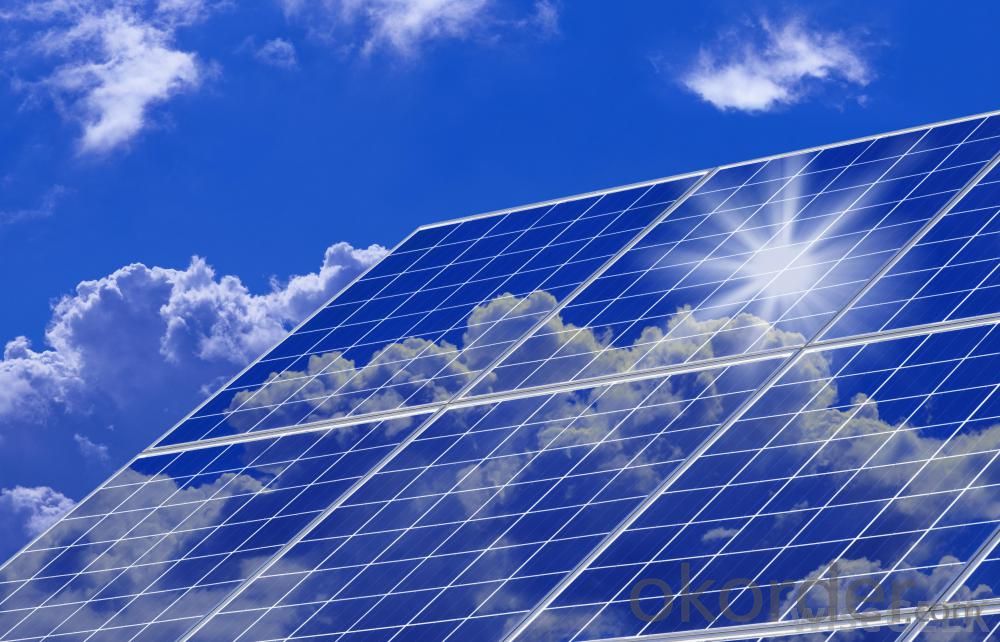
Shipping of Small Poly Solar Panel 35~85w
By Sea | Delivery from Shanghai or Ningbo seaport |
By Air | Departure from Shanghai Pudong Airport |
By Express | Post by DHL, EMS, UPS, TNT. |
Features of our products:
• High conversion efficiency mono/poly-crystalline amorphous silicon solar cells
• Modules incorporate high performance bypass diodes to minimize the power drop caused by shading
• High transmittance, low-iron tempered glass
• High performance EVA encapsulant to prevent destroying and water.
• AI frame: without screw, corner connection. 8 holes on the frame can be installed easily
• Good performance of preventing from atrocious weather such as wind and hails
• Certifications: CE IEC TUV VDE UL, Class I
• 10 years 90% power output warranty
As a professional Solar Panel manufacturer and Supplier in China, we have our customers come around the whole world and our specialization has got a worldwide recognition. Meanwhile, with our superior quality, competitive price, prompt and excellent service, As main role in trade section of CNBM Group, CNBM International Corporation supplies products including Monocrystalline Solar Panel, Polycrystalline Solar Panel ( multicrystalline silicon Solar Panel) have received and enjoyed famous reputation in many countries and regions in the world.
- Q: What is the role of solar energy systems in reducing energy inequality?
- Affordable and sustainable energy sources are made accessible to underserved communities or those lacking reliable electricity through solar energy systems, thereby reducing energy inequality. Solar energy systems offer scalability, making them suitable for large-scale installations and small-scale community projects. This adaptability enables their deployment in rural areas with limited or unreliable grid infrastructure, improving the lives of people in these communities by providing electricity to homes, schools, and healthcare facilities. Moreover, solar energy systems can be installed on rooftops, reducing the need for additional land and minimizing environmental impact. This is particularly crucial in urban areas where space is limited and conventional energy sources like coal or gas are more polluting and harmful to human health. By reducing air pollution and associated health issues, solar energy systems create a cleaner and healthier environment. Decentralized energy production is another significant aspect of solar energy systems. Instead of relying solely on distant large power plants, solar energy systems promote distributed generation, allowing electricity to be produced and consumed locally. This decentralization empowers communities, reducing their dependence on centralized grids and volatile energy prices. Solar energy systems also bring economic opportunities and lower energy costs to marginalized communities. By investing in solar installations, communities can generate income by selling excess energy back to the grid, creating local job opportunities and fostering economic development. Additionally, solar energy systems help reduce household energy bills, freeing up financial resources for other essential needs. In conclusion, solar energy systems play a vital role in reducing energy inequality by providing equitable access to affordable, sustainable, and clean energy sources. By addressing energy poverty and promoting self-sufficiency, solar energy systems contribute to a more inclusive and sustainable future for all.
- Q: How much space is needed to install a solar energy system?
- The amount of space required for installing a solar energy system varies based on several factors such as the capacity of the system, the type of solar panels used, and the available sunlight. On average, for residential installations, a solar energy system typically requires around 100-400 square feet of roof space per kilowatt (kW) of solar capacity. However, ground-mounted systems can require more space, especially for larger installations. It is essential to conduct a site evaluation to determine the specific space requirements for a solar energy system.
- Q: How do solar energy systems impact renewable energy targets?
- Solar energy systems have a significant impact on renewable energy targets as they contribute to increasing the overall share of renewable energy in the energy mix. By harnessing the power of the sun, solar systems generate clean electricity, reducing the reliance on fossil fuels. This helps countries and communities to meet their renewable energy targets by diversifying their energy sources and reducing greenhouse gas emissions. Additionally, the scalability and accessibility of solar technology make it a viable option for both large-scale projects and individual homeowners, further accelerating the progress towards renewable energy targets.
- Q: Can solar energy systems be used for heating and cooling buildings?
- Heating and cooling buildings can indeed be accomplished using solar energy systems. These systems, including solar thermal systems and photovoltaic (PV) systems, can be employed to offer heating and cooling solutions for buildings. Solar thermal systems capture the sun's heat and convert it into usable thermal energy. This energy can be utilized for space heating, water heating, and even for cooling purposes. In the case of a solar thermal heating system, solar collectors are placed on the roof or façade of a building to capture the sun's heat. This heat is then transferred to a heat exchanger or heat storage system, which can be utilized to warm the building during colder periods. Similarly, solar thermal cooling systems harness the sun's heat to power absorption chillers or desiccant cooling systems. These systems utilize the heat energy to drive a refrigeration cycle, which cools the air inside a building. Solar thermal cooling systems are especially effective in hot climates with high cooling demands, as they decrease reliance on traditional air conditioning systems. Additionally, PV systems can indirectly contribute to the heating and cooling of buildings. By generating electricity from sunlight, PV systems can power electric heating or cooling devices, such as heat pumps and air conditioners. While PV systems are primarily known for generating electricity, this electricity can be used to operate heating and cooling systems, thereby reducing the need for fossil fuel-based methods. To sum up, solar energy systems can be utilized for both heating and cooling buildings. Whether through solar thermal systems directly capturing the sun's heat or PV systems indirectly powering heating and cooling devices, solar energy offers sustainable and environmentally friendly solutions for heating and cooling buildings.
- Q: What is the impact of saltwater exposure on solar panels?
- Solar panels can be significantly and detrimentally affected by exposure to saltwater. The presence of corrosive salts, particularly sodium chloride, in saltwater can corrode the materials utilized in solar panels. This corrosion can result in the deterioration of various components of the panel, including the frame, wiring, and connectors. The main concern with saltwater exposure is the potential damage to the protective coatings on the surface of the solar panels. These coatings are designed to shield the cells from environmental factors like moisture and UV radiation. When saltwater comes into contact with these coatings, it can break them down, exposing the solar cells. Once the cells are exposed, they become susceptible to the corrosive properties of saltwater. The corrosive salts can attack the metal contacts and connections within the solar panels, leading to a decrease in efficiency and overall performance. This corrosion can also cause electrical malfunctions, such as shorts or open circuits, rendering the solar panels completely non-functional. Additionally, saltwater exposure can result in the accumulation of salt deposits on the surface of the solar panels. These deposits can reduce the amount of sunlight reaching the cells, thereby decreasing their energy production. Furthermore, the salt deposits can create an additional barrier between the sunlight and the cells, further reducing efficiency. To mitigate the negative effects of saltwater exposure, it is crucial to implement appropriate maintenance and cleaning procedures for solar panels in coastal or saltwater-rich environments. Regular cleaning with a non-abrasive solution can help remove salt residues and prevent the buildup of deposits. Furthermore, utilizing corrosion-resistant materials like marine-grade aluminum or stainless steel for panel frames and connectors can help prolong the lifespan of solar panels in these harsh environments. In conclusion, saltwater exposure can be detrimental to the performance of solar panels, leading to corrosion, reduced efficiency, and potential system failure. Proper maintenance and the use of corrosion-resistant materials are crucial in minimizing the negative impact of saltwater exposure and ensuring the long-term effectiveness of solar panels in coastal or saltwater-rich areas.
- Q: Can a solar energy system be used in areas with high levels of dust or sand?
- Yes, a solar energy system can be used in areas with high levels of dust or sand. However, it is important to note that excessive dust or sand accumulation can reduce the efficiency of the system over time. To mitigate this, regular maintenance and cleaning of the solar panels may be required. Additionally, installing the panels at an angle or using anti-reflective coatings can help minimize the impact of dust or sand on the system's performance. Despite these challenges, solar energy systems can still be successful in these areas, especially if proper precautions and maintenance are taken.
- Q: What is solar tracking and how does it improve system efficiency?
- Solar tracking refers to the mechanism used to orient solar panels towards the sun to maximize their exposure and energy capture. By continuously adjusting the position of the panels throughout the day, solar tracking ensures that they are always facing the sun directly, optimizing their absorption of sunlight. This improves system efficiency as it maximizes the solar energy harvested by the panels, resulting in increased electricity production compared to fixed panel systems.
- Q: Can solar energy systems be used in areas with limited grid infrastructure?
- Yes, solar energy systems can be used in areas with limited grid infrastructure. Solar energy systems are particularly suitable for off-grid or remote areas where it may be challenging or costly to extend the existing electrical grid. These systems can provide a reliable and sustainable source of electricity, reducing dependence on traditional grid infrastructure and fossil fuels.
- Q: What is the impact of roof orientation on the performance of solar panels?
- The impact of roof orientation on the performance of solar panels is significant. The orientation of the roof determines the amount of sunlight that the panels receive throughout the day. Ideally, solar panels should be installed on roofs that face south in the northern hemisphere and north in the southern hemisphere for maximum exposure to sunlight. East and west-facing roofs can still generate electricity, but their output may be lower. Additionally, the tilt angle of the roof can also affect the performance of solar panels. By optimizing roof orientation and tilt, the efficiency and productivity of solar panels can be greatly enhanced.
- Q: Can solar energy systems be installed on sports facilities or stadiums?
- Yes, solar energy systems can be installed on sports facilities or stadiums. In fact, many sports facilities and stadiums around the world have already incorporated solar energy systems to reduce their carbon footprint and lower energy costs. These systems can generate electricity by harnessing the power of the sun, providing a sustainable and renewable source of energy for the facility. Additionally, the large roof spaces and open areas of sports facilities make them ideal for solar panel installations.
Send your message to us
Solar Energy Systems Llc 85w Small Solar Panels In Stock China Manufacturer
- Loading Port:
- China main port
- Payment Terms:
- TT OR LC
- Min Order Qty:
- 1 watt
- Supply Capability:
- 10000000 watt/month
OKorder Service Pledge
OKorder Financial Service
Similar products
Hot products
Hot Searches
Related keywords
